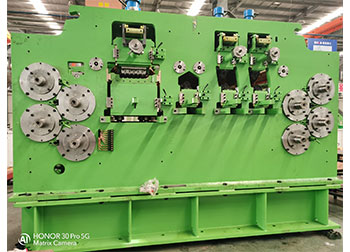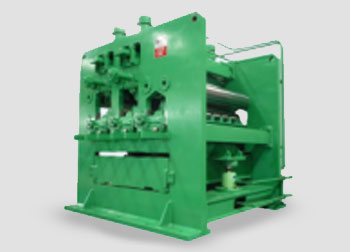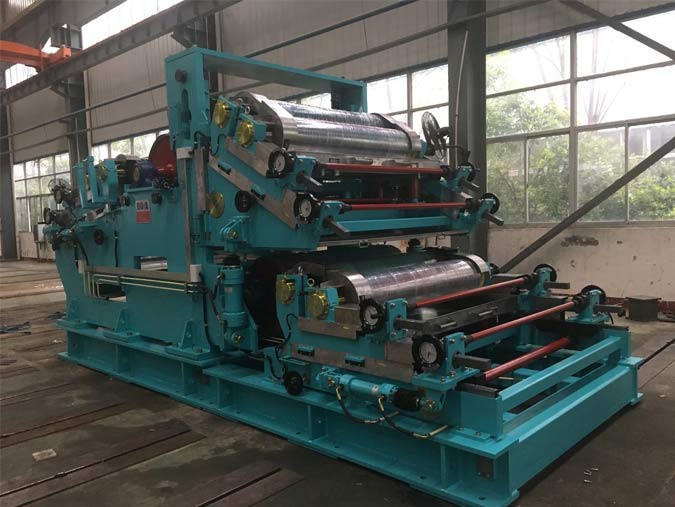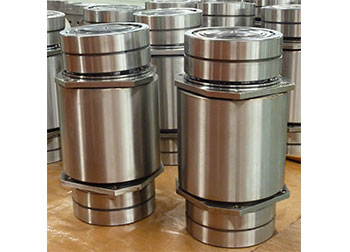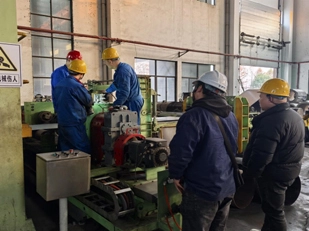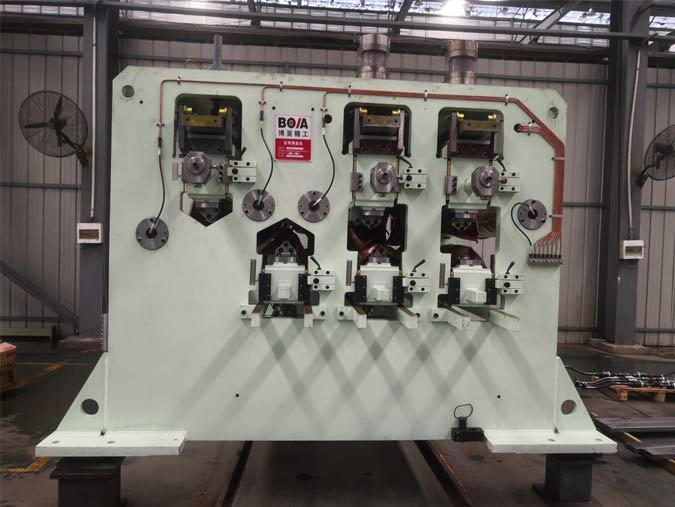Mechanism and Preventive Measures of Roll Slippage in Tension Leveler Machine of Cold Rolling Production Line
1. Analysis of slipping phenomenon of tension leveler machine
Slip can be divided into physical slip and control slip.
Physical slip
It can be known from Euler's formula that the increasing multiple of the tension leveler machine depends on the friction coefficient of the tension roller surface and the design wrap angle. Since the design wrap angle has been fixed, the physical slip of the tension leveler machine is mostly due to the friction of the tension roller. There are many reasons for the smaller coefficient of friction on the roller surface.
First of all, polyurethane is mostly used as the surface material of the tension roller, and the zinc slag on the surface of the sheet will be adsorbed on the surface of the roller during the production process, making the surface of the roller smooth, and the friction coefficient between the strip steel and the surface of the roller becomes smaller. The corresponding incremental multiples cannot be satisfied between the two tension rollers, which causes the tension leveler machine to slip. Slipping makes the surface of the strip steel slide relative to the roll surface, causing more aluminum ash to adhere to the roll surface. In response to this phenomenon, the tension leveler machine should be cleaned every week to prevent slippage caused by zinc slag adhering to the roller surface.
Secondly, the effect of the running speed of the strip on the friction coefficient between the strip and the roll surface. When the strip runs at a higher speed, it is affected by the centrifugal force proportional to the square of the speed, and the air layer is sandwiched between the strip and the roll surface, so that the actual wrap angle and friction coefficient between the strip and the roll surface are reduced. For this case, the common method is to press the roller at the tension roller, and control the slipping of the strip at the wrap angle by controlling the pressure of the roller.
Controlled skid
Improper load distribution on tension leveler machines. During the commissioning, the control of the tension roller group is mainly based on the speed of the exit 1# tension roller, and the other tension roller motors will saturate the speed loop, and at the same time give the same torque ratio as the speed reference motor for torque control, so as to achieve the purpose of tension control , to obtain the ideal strip yield strength. This control method will have a large speed difference, which will easily cause slippage, wear the wheel surface, and damage the strip steel. Later, the tension leveler machine was changed to the speed control mode, and the speed of the 1# tension roller at the exit was still used as the benchmark. The other tension roller motors were controlled according to a certain speed, and the other motors were given 100% torque ratio as the torque.
A perfect and reasonable electrical control method will help reduce the degree of slipping of the tension roller, thereby reducing the wear of the tension roller. The commonly used tension roller control method is to select a group of tension rollers as the speed roller among all the tension rollers in the entire production line, and use the tension roller speed as the benchmark for other tension rollers to adopt closed-loop tension control in order to achieve the balance of the counterweight. The purpose of the control principle is to perform torque control according to the same torque ratio. In this control mode, there will be a large speed difference between the slipping tension roller and the strip. If the tension roller is controlled by the same torque ratio of the motor, the tension roller motor is also controlled by speed. In this way, on the one hand, it ensures that the torque distribution of the tension roller is in a balanced state when it is in stable operation, that is, the counterweight is balanced; Because the torque distribution of the rollers needs to be balanced, the speed difference between the tension roller speed and the strip steel is caused, thereby reducing the wear of the tension roller.
2. Suggestions on production operation of tension leveler machine
The following is a summary of some measures that should be taken when the tension roller slips in actual production operations.
For production operators:
(1) Control the running speed of the unit to make it run smoothly, and try to avoid the phenomenon of emergency stop, so that the tensile stress of the tension roller will increase.
(2) Establish a production system for regular grinding rollers.
For equipment maintenance personnel:
(1) Check whether there is excessive wear and indentation on the gear joint and tooth surface on the transmission side of the tension roller, and whether the grease lubrication is normal.
(2) Drive the tension roller separately to judge whether there is any abnormal sound in the bearing.
(3) Optimize the control scheme of related equipment before and after the tension leveler machine to avoid tension fluctuations of the strip.
Topics You May Be Interested in:
Roll Coating Process
Backup Rolls
Precision Blanking
Conventional Stamping
Rubber Roller Coating Machine
Press Blanking
Popular BOYA Flat Metal Processing Machinery
Other Articles about BOYA Flat Metal Processing Machinery

 English
English 